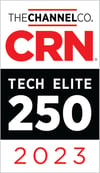Flash storage is known for providing top capacity and high performance in a small package. However, flash storage has evolved over the years to offer much more. Current flash storage solutions, such as IBM FlashSystem Family, can help companies meet many of today’s technology challenges.
Not only do IBM Flash Storage solutions provide ample storage and performance capabilities, but they can protect and manage data, as well as provide a springboard to digital transformation.
Here’s an overview of how flash storage can solve 5 top technology problems:
1) Higher data volumes
Big data keeps getting bigger. Journalists at Raconteur predicted that by 2025, 263 exabytes of data will be created every day. Much of this data is created by social media and search. Companies need to make sense of social media information to understand their customers better.
In the corporate world, huge volumes of data are generated by the new ways business is conducted. Many companies are embracing technologies such as IoT to track and maintain business assets and automate processes. Sensors and beacons on IoT devices produce an endless stream of data. This data needs to be transmitted and processed to be of value to the business.
IBM Flash Storage enables organizations to store and process large data volumes quickly and reliably. Low latency and fast throughput speeds allow the business to analyze accurate, real-time data for the best decision-making. Data reduction technologies allow companies to store more data using less space.
2) Changing cybersecurity landscape
As data becomes increasingly valuable to companies, cybercriminals work harder to steal it. Hackers have developed sophisticated social engineering methods that they use to trick employees into clicking on infected email attachments.
Ransomware is a persistent threat that continues to evolve. Now ransomware can infiltrate companies without using a phishing email. The malware can delete on-site backup files automatically.
IBM’s Flash Storage has built-in data protection capabilities. Some flash solutions can encrypt information and replicate data through snapshots that can be stored in the cloud, safe from ransomware attacks.
3) New data security regulations
As cybercrime becomes more rampant, data security regulations become stricter out of necessity. Highly regulated industries, such as healthcare and finance, require that organizations protect personally identifiable information from unauthorized access. Data and transaction records must be archived, and reports need to be made and stored for auditing purposes.
IBM Flash Storage offers options for hybrid and all-flash arrays that can be used to tier data storage. Traditional storage provides space for archiving records and data that is infrequently accessed. Flash storage can be reserved for production data.
4) Increased use of applications that rely on modern architectures
Today’s applications have higher performance, security, and flexibility requirements than traditional software. Applications enable advanced analytics, such as artificial intelligence and machine learning. New applications help personalize customer experience and allow companies to communicate consistently across many channels.
IBM’s flash storage options include non-volatile memory express (NVMe), which can handle the performance demands of advanced applications. NVMe-based flash achieves extremely low latency rates for more reliable and efficient data processing. Tens of thousands of commands and separate queues can be handled by the latest flash storage.
5) Emerging Technologies
To stay competitive, companies need to stay current with emerging technologies. Technology trends include artificial intelligence, machine learning, blockchain, and IoT. As organizations embrace these trends, they must contend with the complexities that new technologies create.
Advanced analytics create new performance demands and require better ways to store and organize data. IoT boosts data volumes and pressures companies to process data at the edge.
NVMe-based flash not only meets the performance needs of today’s advanced applications, but it also enables companies to prepare themselves for the demands of future innovations.
Flash Storage Designed to Meet Challenges
Not every type of flash storage will conquer today’s technology complexities. IBM has developed its FlashSystem Family to do just that.
IBM FlashSystem Family has an NVMe-based architecture built to accelerate decision-making. FlashSystem solutions allow companies to scale quickly and meet big data capacity requirements. These flash arrays are designed for ultra-low latency so they can support high-performance applications.
As an IBM Platinum Business Partner, ProActive Solutions can help your company choose a FlashSystems solution to align with your business needs. We take a consultative approach to guiding customers through the process of transforming their approach to data storage architecture.
Find out what your business can achieve with IBM flash storage. Request a storage consultation from ProActive.



